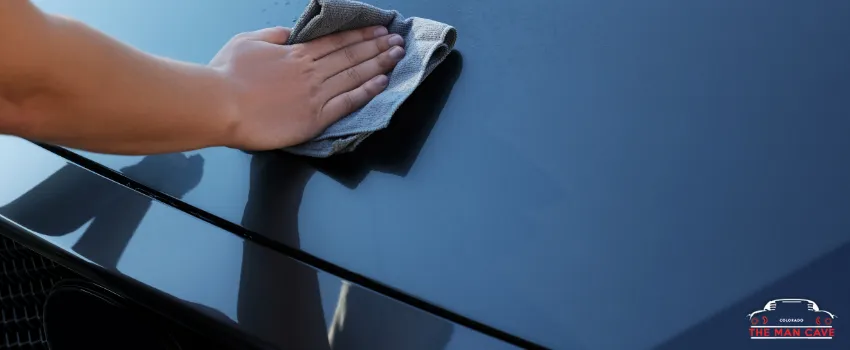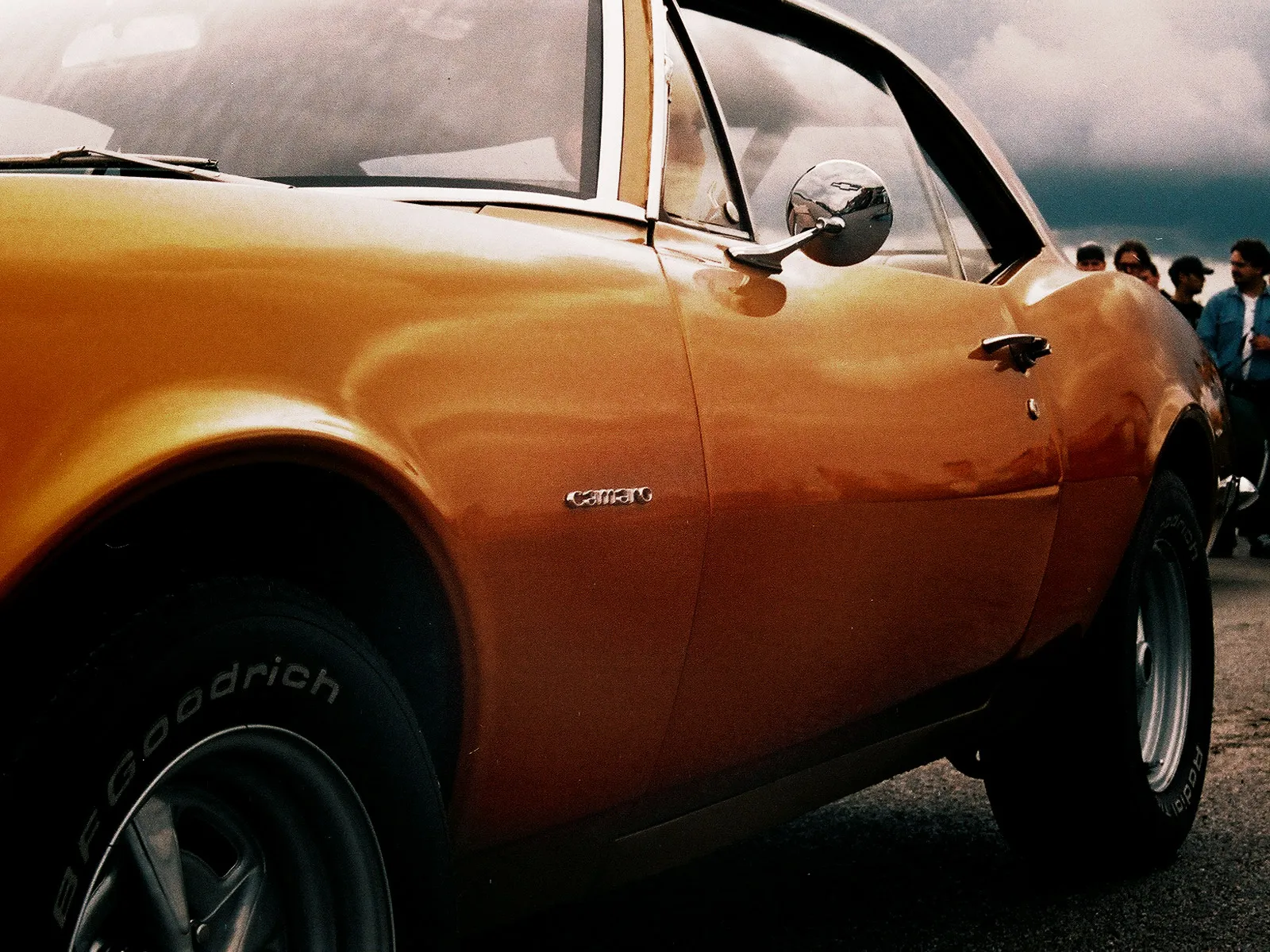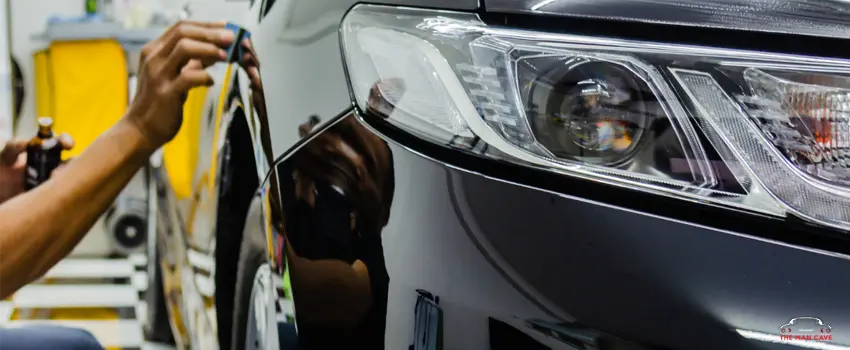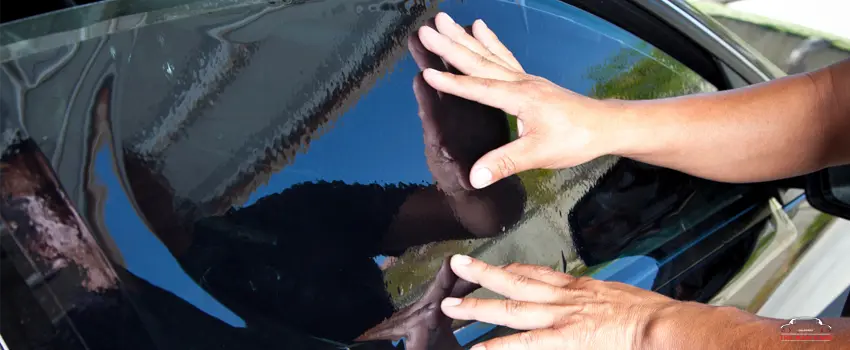Getting a ceramic coating for your car is like giving it a suit of armor, protecting it from the elements, and keeping it looking sleek and shiny for years. But before enjoying all the benefits of this premium treatment, you need to roll up your sleeves and learn how to prep for ceramic coating.
A ceramic coating is a liquid polymer that is applied to the exterior of a vehicle to protect it from scratches, dirt, and UV rays. It creates a strong bond with the car’s paint, forming a protective layer. However, for the coating to work its magic, the car’s surface must be properly prepared.
Proper prep for ceramic coating ensures that the vehicle’s surface is clean, smooth, and free of any imperfections that could hinder the coating’s effectiveness. It requires attention to detail and a willingness to put in the time and effort to get it right. To help you in this vital step, we’ve gathered five expert tips on how to prep for ceramic coating effectively.
The Importance of Ceramic Coating Prep
Before learning how to prep for ceramic coating, it’s critical to understand why it’s important. Just as a solid base is important for building a stable structure, preparing your vehicle’s surface is critical to achieving optimal results with a ceramic coating. The ceramic coating prep process ensures that your car’s paintwork is pristine, setting the stage for a flawless ceramic coating.
When you dedicate time to thorough ceramic coating prep, several significant benefits emerge:
1. Contaminant Removal
By thoroughly cleaning the surface, you eliminate dirt, grime, and contaminants that might hinder the coating’s adhesion. A proper ceramic coating prep guarantees a clean canvas for the ceramic coating to form a robust and lasting bond with the paint.
2. Imperfection Correction
Addressing imperfections like scratches or swirl marks is an integral part of ceramic coating prep. Techniques such as washing, polishing, or paint correction are employed to restore the paint’s integrity. Neglecting these imperfections during ceramic coating prep is similar to applying makeup to a blemished complexion – the flaws remain visible. Thus, it’s vital to take the time to thoroughly address any imperfections as part of the ceramic coating prep process.
3. Surface Uniformity
Achieving a smooth and uniform surface during prep for ceramic coating is pivotal. This uniformity ensures that the ceramic coating can be applied evenly, preventing patchiness or streaks in the result.
4. Existing Coating Assessment
Surface prep for ceramic coating involves evaluating the presence of any pre-existing coatings or sealants on the vehicle’s surface. Identifying these substances is essential, as they may need to be removed to facilitate direct bonding between the ceramic coating and the paint. Proper prep for ceramic coating guarantees the best outcome and long-lasting protection for your cherished vehicle.
How To Prep For Ceramic Coating
Now that you understand the significance of surface preparation, let’s dive into the specifics of how to prep for ceramic coating. Take note, though, that the preparation process may vary depending on the condition of your vehicle and the specific instructions provided by the coating manufacturer. Nevertheless, learning how to prep a car for ceramic coating is easy to follow.
Generally, there are seven primary steps:
1. Wash your car thoroughly.
The first step in any good surface prep for ceramic coating is to give your car a thorough wash. And we’re not talking about a quick splash and dash here. To get the best results, you’ll want to:
- Use a pH-neutral car shampoo.
- Opt for a two-bucket wash method to avoid swirl marks. This means having one bucket for your soapy solution and another for rinsing your mitt or sponge.
- Start from the top and work your way down, ensuring every nook and cranny is cleaned.
- Pay extra attention to areas with visible dirt or contaminants.
When learning how to prep a car for ceramic coating, it’s important to remember that a clean car is the foundation of a successful ceramic coating. Take your time with this step to get it right.
2. Decontaminate the paint surface.
After washing, it’s time to kick things up a notch and decontaminate the paint surface. Even if your car looks clean, there may still be some sneaky contaminants hanging around. To give them the boot, you can:
- Clay bar the paint. This process involves using a clay bar or a synthetic equivalent to remove stubborn dirt, road grime, and other contaminants that regular washing can’t eliminate.
- Consider using iron fallout remover or a similar product – Use these tools to eliminate any iron particles that may have bonded with the paint. You’ll know if these pesky particles are present when you see tiny rust spots or if the paint surface turns purple.
By decontaminating the paint, you’re ensuring that the surface is as pure as can be, ready to form a strong bond with the ceramic coating.
3. Inspect the paint.
The next step in learning how to prep for ceramic coating involves closely inspecting the paint. The goal here is to identify any problem areas that need special attention. Grab a good light source and carefully check the entire car for:
- Scratches, swirl marks, or other paint imperfections
- Chips or dings that have exposed the bare metal
- Clear coat failure (peeling or flaking paint)
It’s essential to address these issues before applying the ceramic coating. If left unattended, they can become more pronounced and require costly repairs.
4. Fix the paint imperfections.
Once you’ve identified those pesky imperfections, it’s time to roll up your sleeves and get to work. The specific methods for fixing these issues will depend on their severity, but your options may include:
- Lightly buffing or polishing the area for minor scratches and swirl marks
- Using touch-up paint for chips and dings that have exposed the bare metal
- Considering professional repainting services for a more extensive and quality finish on larger or deeper damages
Remember, applying a ceramic coating is like spotlighting your car, so you’ll want the paint to look its best.
5. Let the car paint dry completely.
Before proceeding to the next step, it’s important to give the paint a breather and let it dry completely. You don’t want moisture hanging around when you apply the coating, as it can throw a wrench in the works and mess up the finish.
The paint drying time can vary depending on the weather, so exercise patience here. It’s better to wait a little longer than to rush and risk a subpar result.
6. Check for existing coatings and sealants.
While waiting for the paint to dry, take the opportunity to check for existing coatings and sealants. These can include wax, paint sealants, or old ceramic coatings. To do this, you can:
- Spray some water on different panels of the car.
- Observe if the water beads up or forms sheets.
If the water beads up, it means there is still some existing protection on the surface. However, if it forms sheets and slides off, the previous coatings have likely worn off, and the surface is ready for the new ceramic coating.
Identifying existing coatings is essential because they may need to be removed before the new ceramic coating can be applied. Some ceramic coatings require a bare paint surface for the best results.
7. Mask off the trim and delicate areas.
Last, before you break out the ceramic coating, take some time to mask off the trim and delicate areas. Ceramic coatings are designed to bond with the paint, but they can be fussy for other materials like plastic trim or rubber seals.
To avoid any potential mishaps, grab some painter’s tape and carefully protect these components:
- Plastic trim
- Rubber seals
- Glass
- Any other non-painted surfaces
By doing this as part of your surface prep for ceramic coating, you’re ensuring that the focus remains on the paint and that the ceramic coating won’t leave any unwanted marks on your car.
The Bottom Line
A common concern among car owners is how to prep a car for ceramic coating and if it’s important. Proper prep is the foundation for a successful ceramic coating. It requires you to do your homework in choosing the suitable coating, schedule the application in an appropriate environment, and plan for sufficient curing time. Physical prep involves washing and decontaminating the paint surface, addressing imperfections, and careful masking.
Remember, success lies in the details, so don’t forget to pay attention to the small stuff, like checking the adhesion of masking materials and doing a final wipe-down using a surface prep product. By learning how to prep for ceramic coating, you’ll be well on your way to unlocking the full potential of ceramic coating for your car.
Experience Quality Ceramic Coating From Man Cave Colorado
Man Cave Colorado can provide you with the highest-quality ceramic coating in Denver, CO. Our expert team is dedicated to delivering quality and lasting protection for your vehicle’s paint. Don’t settle for anything less than perfection; choose Man Cave Colorado for the ultimate ceramic coating experience. Your car deserves the best, and we’re here to provide it. Get in touch with us today to schedule an appointment.











